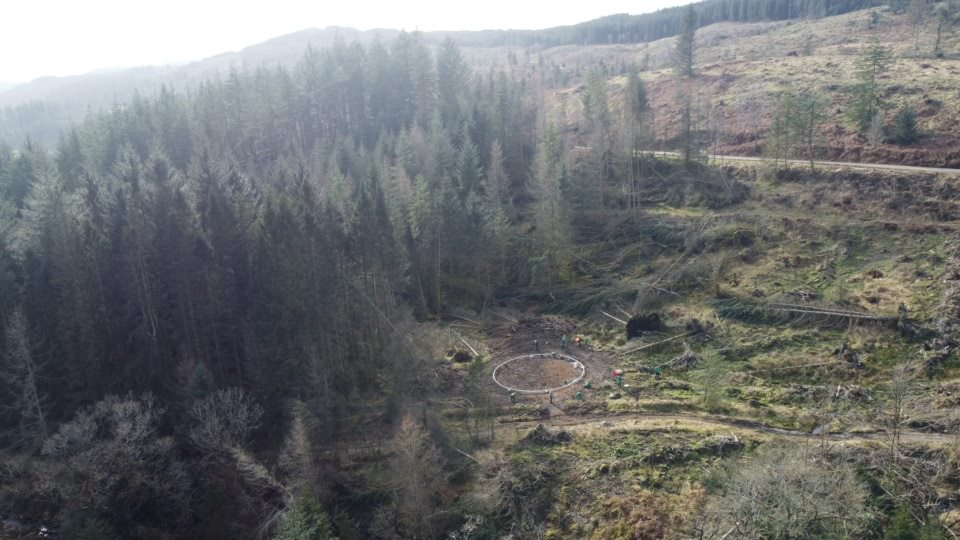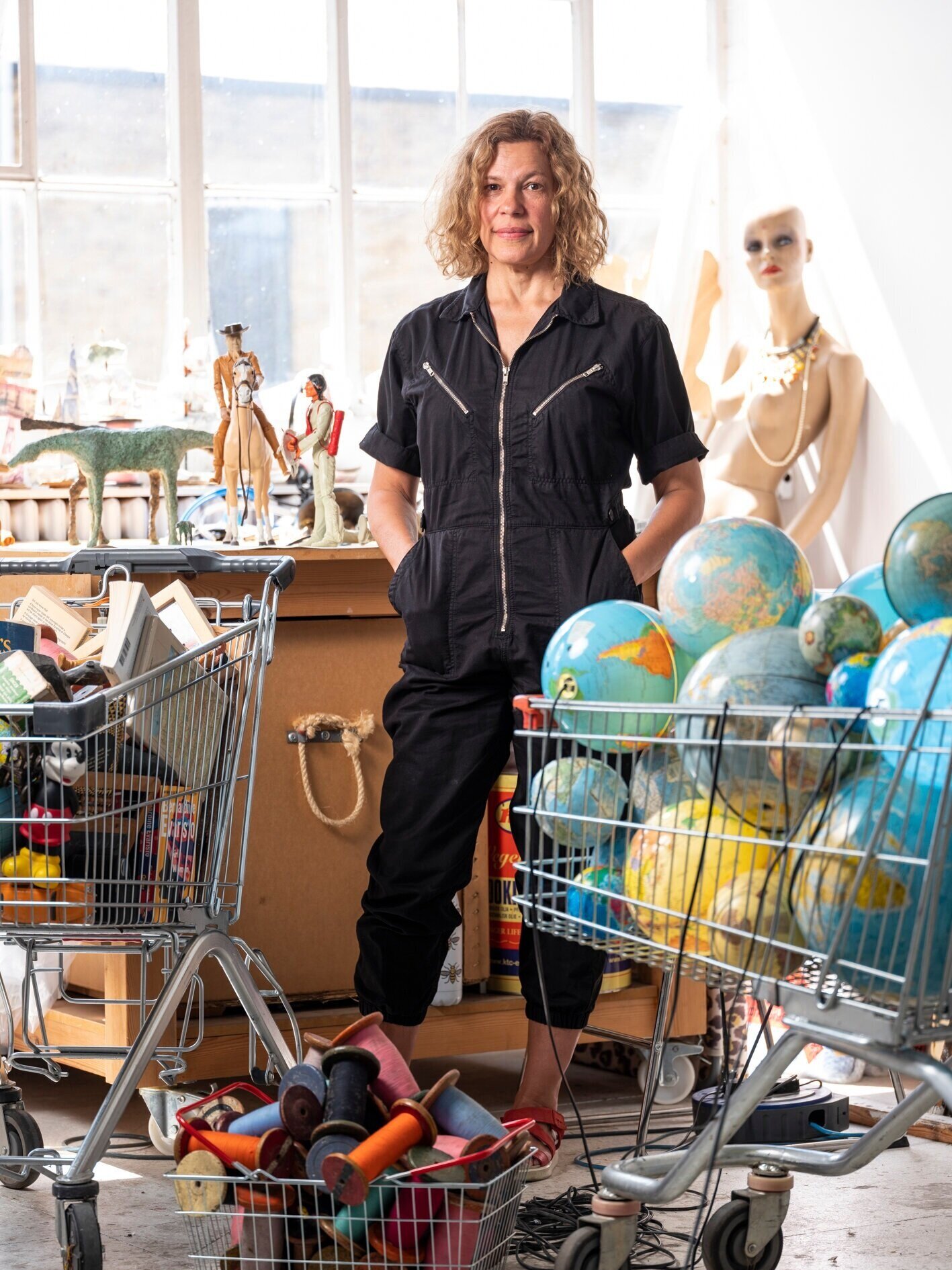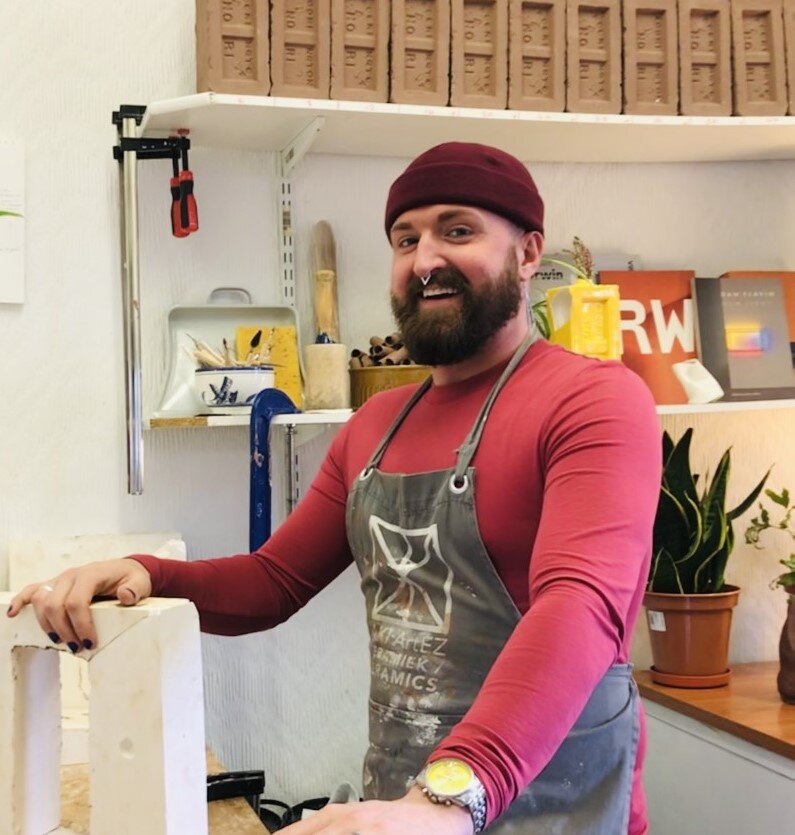(HS) Peter, can you give an overview of why the art programme started at Grizedale Forest?
What was the selection process for the residency programme? Was there a brief to follow or was the process led more by the artist?
(PD) ‘GRIZEDALE FOREST SCULPTURE PROGRAMME
Grizedale Forest has a certain magic. From my first visit I realised that the Lakeland tree-covered fells provided rich content. A collaborative environment presented a Win-Win-Win opportunity for the artist, the hosting Forestry Commission, Northern Arts (ACE) and the visiting public.
Established in 1977 the Sculpture programme pioneered a unique ‘Laboratory’ residency model (c.3-12 months). This provided private working ‘studio’ in the forest. Natural materials were found in the forest (stone, earth, wood). Artist selected sites and the public interface with the sculpture is on the forest visitor trails.
From the start the innovative and influential programme was successful. Richard Harris and David Nash, the first sculptors, set a quality benchmark. Critical and media coverage followed and a dramatic increase in visitors was evident. Grizedale sculpture achieved national and international attention. Sculptors engaged with the local community, various school projects were undertaken and there was a steady flow of art school visits.
Selection of artists was time consuming and thorough. Annually the scheme attracted many applications. In the first year well over 100 artists applied. Shortlisted artists were interviewed. Further discussions were held with the awarded sculptors. There was no brief as such, but guidelines, operating procedures and monitoring were in place to support the artist and help facilitate their work.
COLIN ROSE : TING
Grizedale’s programme also adopted project-based approaches. Colin Rose ‘Ting’ and the ‘Tree Top Walkway’ were such. ‘Ting’s ‘ring of steel’ manufacture and construction costs were a major issue. Fortunately, I was invited by Yorkshire Sculpture Park to select an artist / work for an exhibition. Ting was made. Post exhibition, to Yorkshire’s disappointment, the sculpture was returned to Grizedale. ‘Ting’ was sited close to the central valley road. Initially it attracted considerable attention. Locally this elegant sculpture was known as the Ring of Confidence, named after a toothpaste advertisement.
Peter Davies
Visual Arts Officer, Northern Arts 1974-1993’
(HS)Colin, can you give us insight about what it meant for you as an artist to have work included in the forest sculpture programme?
(CR)From an early stage in my work I was drawn to a response and making work to belong in the landscape. By intervention to add to, or celebrate a quality of that space. Initially a daunting challenge, for who can compete with the grandeur of an oak tree or the scale of the landscape. With my first steps it felt comfortable to relate work within trees to belong in the broader landscape.
(HS)Did you always want to be an artist and which artists inspire you?
(CR)Like many people and without a mentor I became an artist by default. For me, at a young age not knowing 'what to be', but at the same time being the sought after boy at school who drew all the biro tattoos of daggers dripping blood, snakes and endless love hearts!
Later, working in engineering I painted industrial landscapes. It was only as a student introduced to sculpture that I found a language, at that early time I was drawn to artists like Brancusi, and David Smith.
(HS)Can you explain your idea behind Ting?
(CR) Where to start?
Many layers of ideas are encapsulated in a work that evolves over time.
From an interest in language with onomatopoeic words with sounds relating to objects and their form, such as Anglo Saxon CUP, or MOON, that both describe and define the shape. I was interested in this connection and began making 3D compositions rather like harmonies or discords, considering the forms emitting their own sound. I later turned this idea to look at the landscape, imagining every blade of grass, leaf, twig, and branch having its own sound, collectively ringing in a deafening colossal chorus. In contrast to this organic mass of sound I imagined a pure piece of geometry, to both contrast and to celebrate the sense of place.
Although Ting was a large work 40' diameter to relate to the scale of the tree, I did not want a grand statement, and in giving it a title I looked for the smallest sound I could find to describe the work, hence Ting!
I enjoy what viewers bring to a work, it is often enriching with new ideas of how they see it.
Making works in the landscape is only part of the equation. Good spaces do not need anything. I feel it is a challenge for an artist to give back to a space as much as they borrow from it to make ‘a place’!
(HS)Did you choose the tree first that you wanted to install the structure, which gave it the scale, or had you already decided the scale of the piece?
(CR) I had already decided the scale of the piece, relevant to body size and to how far I could push the structural limit of the steel section to create the circle.
As a result it became necessary to choose a mature broadleaf tree to build the work within. These were limited in Grizedale to trees that had been part of the original parkland. Unfortunately, although I found several suitable trees within the forest, for various reasons I was unable to site the work there, and so opted for the copper beech in the valley.
(HS)Up to the point of Ting being installed, the sculptures in the collection were fabricated from natural materials, Ting marks a departure from this, which could have felt quite radical at the time, how was your piece perceived?
(CR)Yes this was a result of bringing a work to the forest as opposed to making a work on site with materials from the forest. I share the approach of other artists using the natural materials in this way, in what was perceived as an open forest sketch book.
Steel was the right material for the idea.
I did not have a problem with this, we use steel daily in our lives.
The fact that the work became prominent in the valley as opposed to it being sited in the forest did raise its profile to become a topic of discussion.
As easy as it is, it was never my intention to make a contentious work. It did however raise many valid questions of our ideas of what is the natural landscape? Grizedale being man made, shaped for thousands of years, and the ultimate question of, who the landscape belongs to?
We often look back with nostalgia on controversial objects, such as red telephone boxes, introduced across the country into rural villages, that were initially seen as intrusive and alien.
(HS) For many artists who have pieces in Grizedale Forest they had conversations with a range of forest workers, was this the case for you?
(CR)Yes!
This was very much the case. I had great respect for the foresters who had worked a long hard day but came to help me assemble and install the work in what was a joyous event of collaboration and discussion.
Only later with the work being debated as a topic with the local WI, that subsequently was picked up by local newspapers with the 'is this art'? label for sales, did it become an issue of contention with the local community.
I have huge respect for the late Bill Grant who was Chief Forester and Peter Davies who established the sculpture programme in Grizedale for taking the brunt of public opposition raised through this debate on art and environment.
(HS)Ting has now had to be deinstalled due to the health of the tree it was originally installed in. You are keen to repurpose the original frame and produce another iteration of the piece deeper in the forest, can you speak a little more about the proposed piece and why you have chosen the location you have?
(CR) Initially there was an offer to re-site the work in a mature oak of which I was very pleased.
However, never built to last, the work over time went out of true form of its original pure circle due to its own weight and was not possible to repair.
Rather than scrap the sections I was attracted to re use them and re-site the pieces horizontally in the Forest as a new work.
Initially I imagined a natural clearing within the forest or a level on an incline that allowed eye level to cross the surface. But because of the scale and available sites, the idea evolved into planting an enclosure on a reclaimed site where trees had been cleared after storm damage, to create an enclosure for the work.
(HS)Can you give a paragraph about the piece which we can use to explain to the audiences the new piece, the significance of the form and how you want the piece to be responded to?
(CR)The new work 'formerly known as Ting 'had arrived from salvaging the elements to be used in a new context.
'Ting' originally was a work derived from ideas of sound relating to form in response to its location in the landscape. With the salvaged elements, I sought to create a new work with a calm floating quality that people could both view and interact with. An edge that defined an inner and outer space like a ripple in a pool of water.
(HS)Will you still call the piece Ting?
(CR) No, I see this as a new work from the sections reclaimed from Ting. Ting had a relevance to the ideas of form and sound. With the new location and position of the work I am interested to explore the quality of calm of the piece lying horizontal and sited level over the slope of the ground and contained within the band of willows surrounding it. Here I very much like the pragmatic simple title of ARC that now describes the sweep of the steel section within the newly created space.







